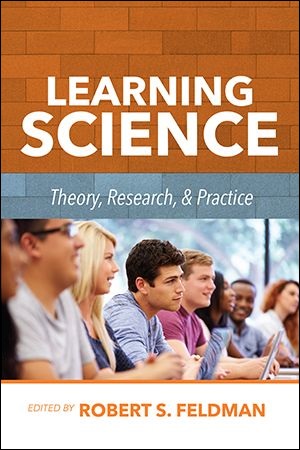This month, McGraw-Hill published Learning Science: Theory, Research, & Practice, a new book co-written by who’s who in the field of learning science. which provides insights from experts in various learning science fields.
The following is an excerpt from the preface of the book, written by Dr. Robert S. Feldman, who also edited the book:
Several larger lessons, and a few predictions, can be drawn from the work described in these chapters. Among the most significant takeaways:
- Learning science is not yet a unified discipline. The blessing, and the curse, of learning science today is that it is far from a unified discipline. It lacks agreed-upon boundaries, theoretical approaches, and research methodologies. This messiness is an advantage in that it allows researchers and theoreticians free rein to draw upon multiple disciplines and approaches. On the other hand, the wild-west nature of learning science today may slow progress as scientists are impeded in their efforts to build upon prior work in an orderly fashion. Still, as the chapters in this volume illustrate, the lack of unity can lead to a creative climate in which important advances can be envisioned (for an excellent example, see Uncapher and Cheng’s Chapter 6).
- Learning science needs a clear, agreed-upon vocabulary. Related to the fact that learning science is not a unified discipline is the lack of clarity even in describing the field. One example is the question of whether we should be discussing “learning science” or “learning sciences.” Careful readers of this volume will note that some chapters speak of “learning science” (as in this Preface), while other chapters append the s to the term. It may seem like a trivial point, but nomenclature matters,driving the field in subtle, yet important, ways. We need to come to some agreement on terminology.
- Work in learning science focuses disproportionately on STEM disciplines. As illustrated by the chapters in this volume (e.g., Chapter 12 by Shute et al. and Chapter 9 by Dede et al.), great effort has been focused on applying learning science to STEM disciplines. That’s understandable: arguably the greatest need is to educate the next generation in math and the sciences. (At least those are the disciplines in which students often have the greatest obvious needs, and traditional teaching techniques have been least effective.) Furthermore, as Fuhrman points out in Chapter 7, the developers of learning science–based innovations are largely housed in STEM-related fields. This is a limitation of the kinds of educational solutions being developed today, and it is clear that for learning science to advance, we need to extend the range of approaches to additional disciplinary areas such as in the humanities, foreign languages, and the social sciences.
- The proliferation of learning science degree programs will accelerate the development of the field. Already, many major universities have developed programs in learning science, and it seems likely that additional programs will be established. This increase in formal degree programs undoubtedly will hasten progress in learning science as new generations of scholars devote themselves to the field.
- Learning science, which has focused largely on cognitive factors in education, will broaden to encompass social-emotional and affective factors. As the Graesser (Chapter 1), Luckin and Cukurova (Chapter 2), and Baker, Ocumpaugh, and Andres (Chapter 5) chapters illustrate, social-emotional and affective factors can have as significant an effect on educational success as cognitive variables. In order for learning science to develop, the field will need to take noncognitive factors into account more systematically.
- Adaptive technologies and artificial intelligence hold great promise. Throughout this volume, research using adaptive technologies, driven by artificial intelligence algorithms, has yielded significant advances in promoting student success. It is hard to envision how this trend will not increase. As the proliferation of adaptive technologies increases, it will raise not only pedagogical issues in terms of the role of teachers and technology, but also philosophical issues regarding the nature of intelligence and what it means to be human.
- Advances in our understanding of learning science need to be translated into teacher training. The average curriculum provided to prospective teachers during their training contains precious little instruction in learning science, as Fuhrman points out in Chapter 7. Making the leap from the lab to the classroom is a critical step that learning scientists need to facilitate. Armed with formidable information derived on their students’ performance, teachers need to be able to incorporate the data into their teaching (as shown in the wonderful examples provided by Ostrow and Heffernan in Chapter 8). How we motivate teachers to make use of the data provided by learning science, and how they can do it effectively, are crucial questions learning scientists have yet to fully come to grips with.
As these issues illustrate, learning science is experiencing some growing pains as it evolves into a full-fledged, sophisticated science. Still, it is a time full of promise for solving what is undoubtedly one of the critical issues of our time: how do we most effectively educate students to reach their full potential?
How incredibly exciting to be on the cusp of a new era in education. Although the quest to develop a viable science of learning is in some ways just beginning, the potential of learning science seems boundless.
